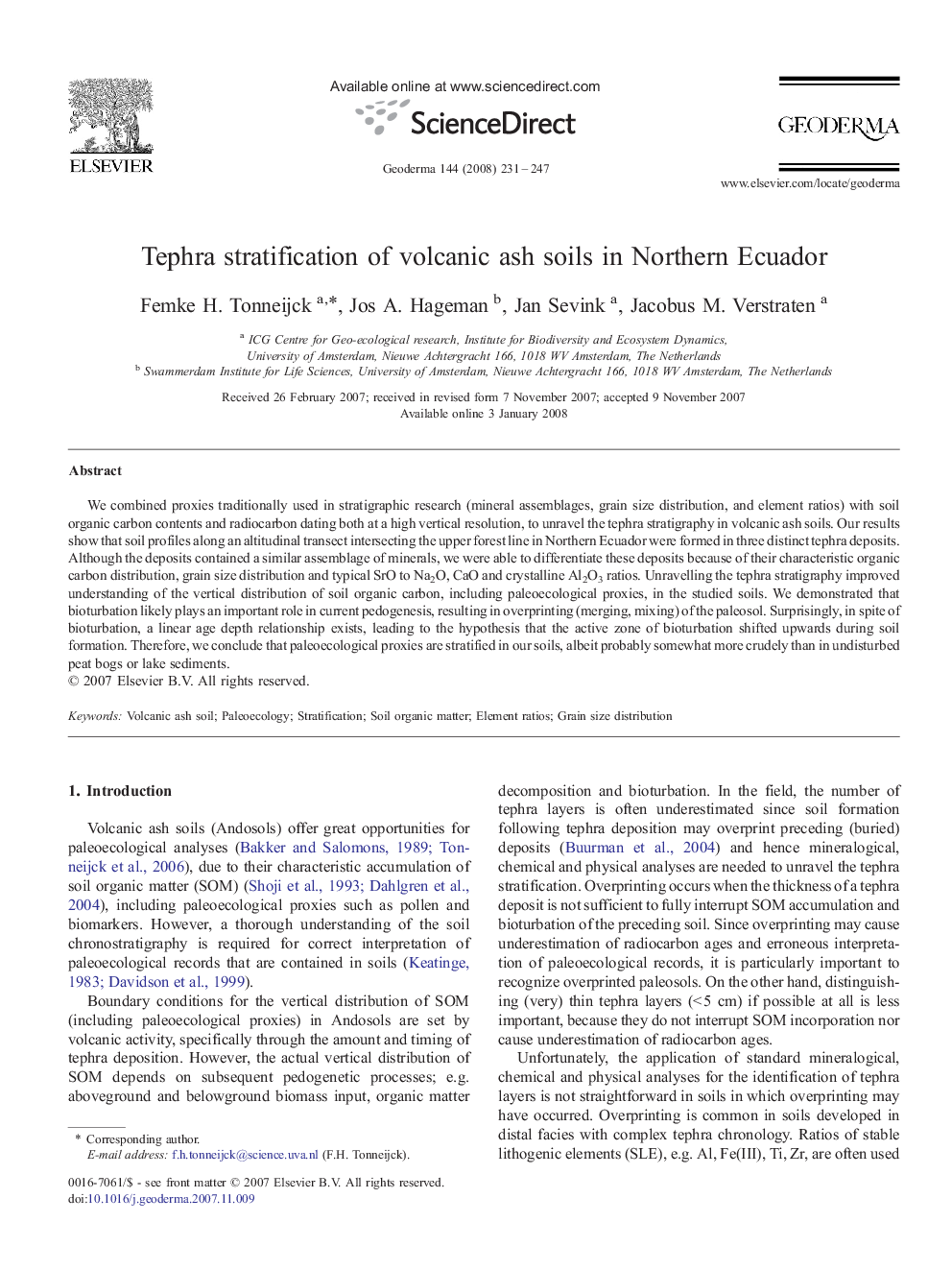| Article ID | Journal | Published Year | Pages | File Type |
|---|---|---|---|---|
| 4575223 | Geoderma | 2008 | 17 Pages |
We combined proxies traditionally used in stratigraphic research (mineral assemblages, grain size distribution, and element ratios) with soil organic carbon contents and radiocarbon dating both at a high vertical resolution, to unravel the tephra stratigraphy in volcanic ash soils. Our results show that soil profiles along an altitudinal transect intersecting the upper forest line in Northern Ecuador were formed in three distinct tephra deposits. Although the deposits contained a similar assemblage of minerals, we were able to differentiate these deposits because of their characteristic organic carbon distribution, grain size distribution and typical SrO to Na2O, CaO and crystalline Al2O3 ratios. Unravelling the tephra stratigraphy improved understanding of the vertical distribution of soil organic carbon, including paleoecological proxies, in the studied soils. We demonstrated that bioturbation likely plays an important role in current pedogenesis, resulting in overprinting (merging, mixing) of the paleosol. Surprisingly, in spite of bioturbation, a linear age depth relationship exists, leading to the hypothesis that the active zone of bioturbation shifted upwards during soil formation. Therefore, we conclude that paleoecological proxies are stratified in our soils, albeit probably somewhat more crudely than in undisturbed peat bogs or lake sediments.
